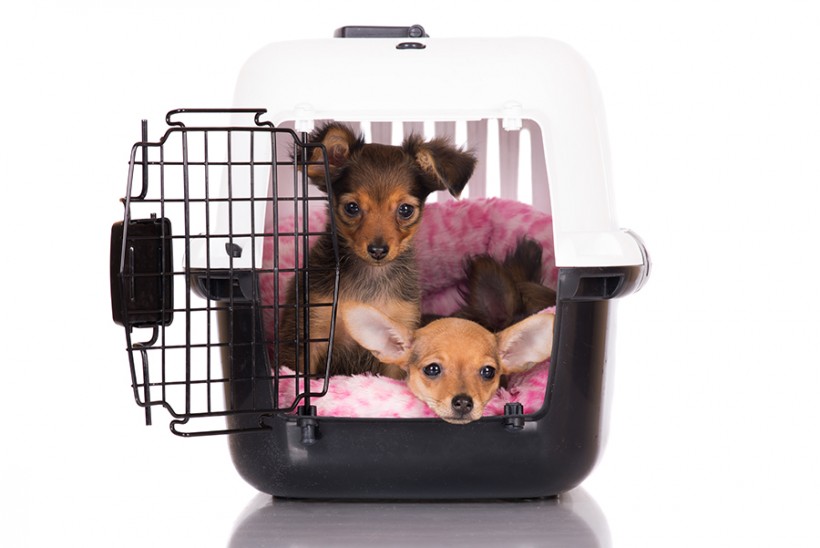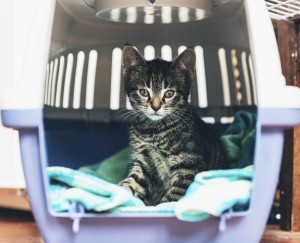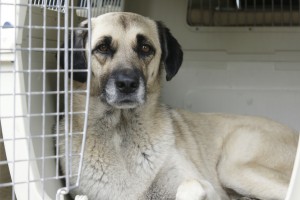If you are thinking about crate training your pet, whether it’s for travel or other purposes, you will be glad to know you are doing the right thing. Once you have selected the type and size of crate appropriate for your pet, which depends on its intended use and the age/size of your current pet, you will be able to provide your pet with a safe place they can call their own and go to when they need to get away and relax.
Start off with finding the right place for the crate in your home. The crate placement should be in an area that isn’t too crowded or noisy , like in the kids room, but in an area that is easily accessible to your pet where they can see what’s going on, perhaps a corner in the living room may be ideal. Easiest way to find a place is look at where your pet spends most of their time, do they enjoy sitting nearby your family in the lounge or TV room, do they prefer to sit away from the noise, these behaviours provide clues of where your pet will feel most comfortable in their crate.
Potty Training
If you’re looking to potty train then it will depend on your individual pet. For dogs you can purchase one with enough space for them to sit and lay down since animals instinctively will keep the place they sleep in clean, anything larger and they will happily go to the bathroom at one end and sleep in the other, which won’t teach them bladder control. With kittens you can buy a crate that would fit an adult cat since instinctively cats will go to the bathroom in sand, which their mum usually shows them how to do. Rule of thumb when potty training is never leave your pets in their crate for too long, since puppies and kittens like babies have zero bladder control until they are taught when and where they should go.
First start using your pet’s crate as a place for them to sleep, puppies and kittens like babies need a lot of rest so go ahead and put a comfortable blanket for them to sleep on and when you see them getting sleepy gently put them in the crate and close the door. Make sure to keep an eye on them so when they wake up you can let them out for playtime, the more you repeat this process the quicker your pet’s will like their crate.
Next step is teaching your pet to be confined to their crate for short periods of time while they are awake. We suggest you start with periods of 10 minutes, if your pet is protesting then feel free to pop in some safe toys for them to play with to keep them occupied and try again. Slowly increase the amount of time they spend in their crate alone, they will begin to learn to self soothe and eventually when you need to leave the house for short amounts of time they will find comfort in their crate in your absence.
Adult pets & pet travel
Your adult pet may take a little more time then crate training a pup or kitten, but no need to be discouraged it will benefit you both.
If you’re looking to relocate your pets soon or in the future, our pet relocation specialists at Ex Pet riate always recommend crate training a pet as soon as possible before travel. However because airlines have strict rules about what size and type of crate is acceptable for each pet, it is best to check with our pet relocation specialists before you buy a crate, to ensure you don’t have to buy another one.
Once you have a crate, start with keeping the door open, or taking it off completely so your pet gets to freely explore the crate without being shut in. We advise with starting to feed your pet in their crate, put the food in the back of the crate and walk away, allowing your pet to figure it out. It is normal for your pet to be afraid of something new and perhaps skip a meal or two refusing to eat in the crate. The truth is your pet will not starve they will eventually go in and eat their food, allow them time to figure this out, in the end it is for their benefit.
Once your pet is comfortable going in the crate to eat their food, replace it with putting your pet’s favorite bedding in the crate. Allow them to go in there to sleep and rest, if they are reluctant put in their favorite toys and give them a yummy treat to enjoy in their crate. Using training commands such as pointing to the crate and saying “crate” or “bed” will help your pet become familiar with being in their crate.
When your pet is happy to go in and rest in their crate it is time to start closing the door. Begin with short periods of time, 10 minutes and then reward them with love and treats while in the crate. Keep increasing the amount of time they spend in their crate gradually with the door closed and reward them for this good behavior.
Now that your pet comfortably goes in to their crate on their own to sleep or play with toys, they have successfully been crate trained and thanks to you, they now see their crate as a positive place for them to relax. Because of you taking time to crate train your pet they are now able to spend time alone in their crate without separation anxiety when you leave the house and feel comfortable in it enough to use as a training tool when you begin the next step of car training using their crate.
For more articles on Pet Travel, Training or other please see our Pet News.





